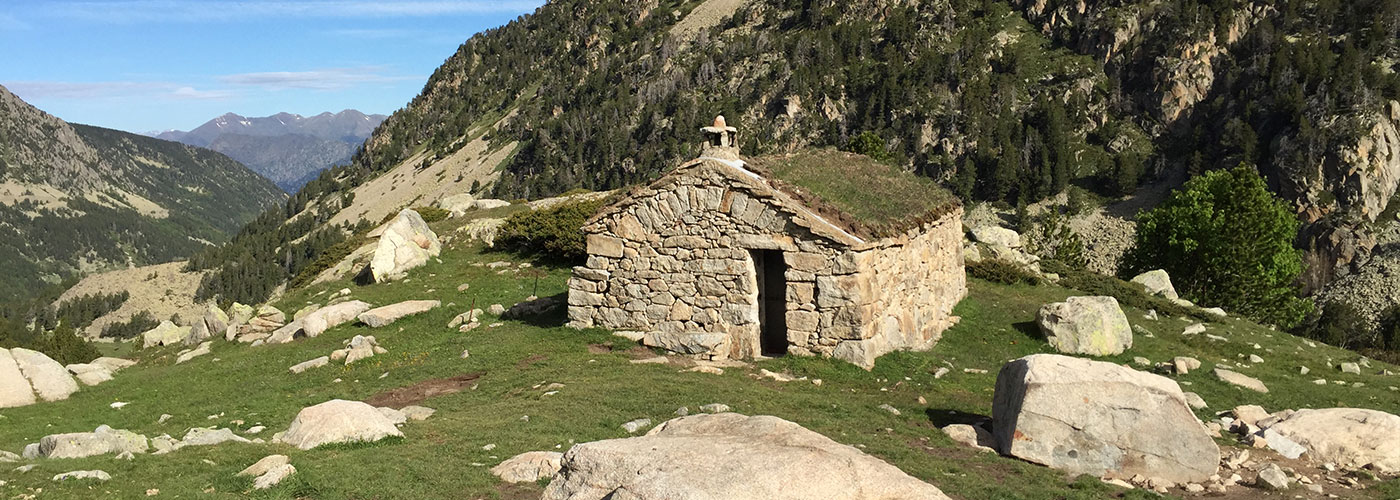
CULTURAL HERITAGE
The occupation of the man inside the valley is concentrated in the areas of Ràmio and Entremesaigües, where the inhabitants of the last century have left us examples representing the agricultural and livestock practices of the time such as dairies, huts and terraces, and other of industrial kind such as forge and iron mines.
Historically, the economy of the valley was based on a symbiosis between agricultural, stock breeding, and iron and steel interests, which had to adapt to an adverse relief and climate. Essentially, the territory was dedicated to agriculture: the bottom of the valley was used as a cultivation area for obtaining agricultural products, both for human consumption as well as for maintaining the herds, initially sheep, then horses and later cattle. In fact, stock breeding was the other basic activity of the area. In this way, these two activities played a determining role in shaping the landscape as you can see it today, and in increasing the diversity of the environment. In short, the task of farmers and stock breeders favoured the development of some of the characteristic features of the valley that currently give it its value: the apparently random mosaics of the cultivated fields, the meadows, the pens (used in the past for cultivating cereals, vines and tobacco and also for taking the animals there to nourish them) and the remains of the shepherds’ huts and the diaries that were used to control the herds and to make the most of the sheep’s wool and milk. This interaction between man and nature has, over time, led to a notable enriching of the biological diversity and also, and most particularly, of the landscape.
It is easy to find remains of these practices in places that were destined to keep animals, such as the Pleta de l’Estall Serrer and the Tancat de Graus. In this area, there are also four huts in ruins which were, in their day, shepherds’ refuges. In addition to the Estall Serrer huts, there are also some at Fontverd, El Serrat de la Barracota, Setut, La Farga, Claror, Perafita and els estanys.
The bordes (dry stone barns) are construction that supported farms away from homeowners, providing farmers with a place where they could leave the basic requirements for working the land and at the same time, a place where to live in while working on the mountains. There are 12 still standing and identified, as well as six in ruins which are Borda Sabater (in ruins), Borda Sassanat, Borda de la Font del Boïgot, the three bordes in Entremesaigües, the Bordes de Ràmio, which are made up of a series of seven huts and four constructions in ruins, and the Borda de Fontverd, currently in ruins.
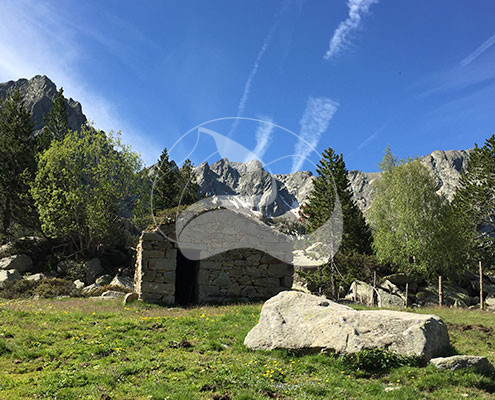
The Serrat de la Barracota shepherd’s hut
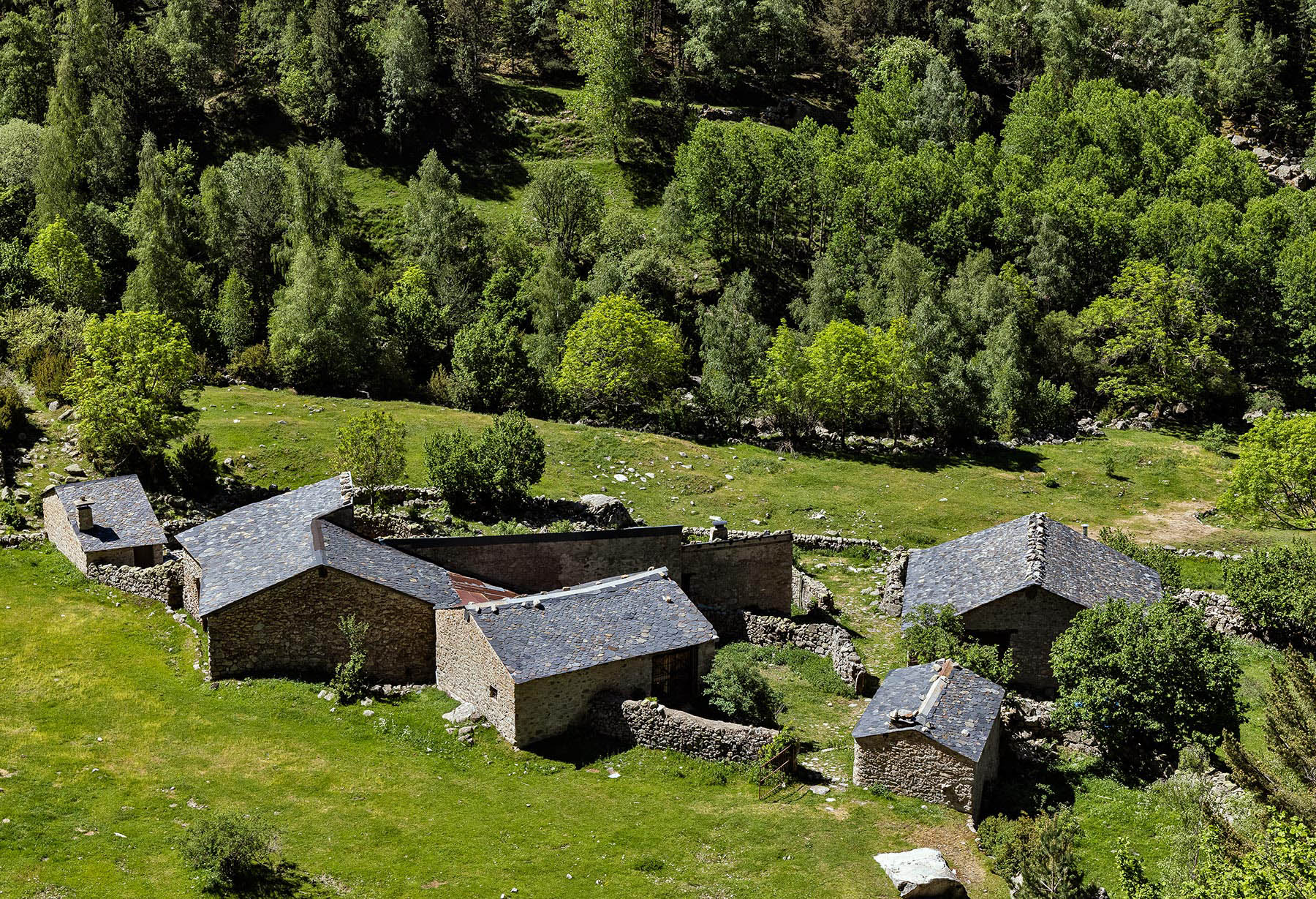
Bordes in Ràmio
The bordes are construction that supported farms away from homeowners
Other examples of traditional architecture are the remains of diaries, dry stone structures that served to milking herds of sheep and obtaining milk with which to make cheeses. They can be found in Setut, La Rivera dels Orris, Mateu, El Planell Gran, Perafita and El Turó de l’Estany de la Nou (all in ruins).
As examples of industrial activity at the beginning of the last century, in addition to a sawmill, more than 600 charcoal bunkers and the iron mines in La Maiana, there is one of the oldest forges in Andorra. It is found at an altitude of 1,990 metres, next to the River Madriu, and was actively productive from 1732 until somewhere between 1836 and 1838. Its difficult location prevent it to be one of the most important forges, but for the same reason, it was one of the most unique.
During the 17th and 19th centuries, stock breeding existed along with iron and metal works and the valley experienced one of its greatest anthropic moments which is when a significant part of today’s rural countryside was constructed.
The cobbled path of the Madriu-Perafita-Claror Valley (or the Muntanya Path) is the vertebral column of traditional communications and one of the most significant cultural values of the valley, which exemplifies the secular condition of the Pyrenees not as a barrier, but for passing through. Central axis of the economic activities that took place in the valley, it constitutes one of the most characteristic and eminent values of this cultural landscape. Today, the Muntanya path has become a stretch of the GR7 hiking route, that is part of the European E4 route, which goes from Greece to Gibraltar.
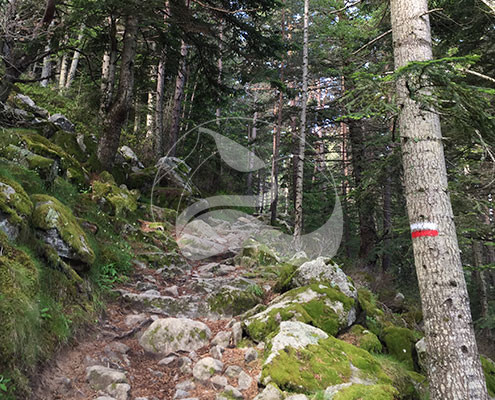
The cobbled path
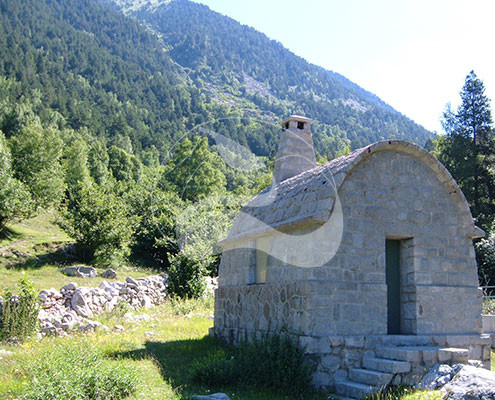
Guard Hut at the Ràmio dam
The last remarkable human intervention on the valley was the work of FHASA in the 1930s, to construct the reservoirs and water collectors that supply the Engolasters dam. The Ràmio and Illa dams, as well as the pipes excavated to supply the Engolasters dam with a sufficient rate of flow are, today, the most visible testimony in the valley to what was, in its day, a highly advanced engineering project. The FHASA works are intimately linked to the history of our country because they opened the doors to modernisation and to the progress of an Andorra which, until then, had lived practically off the rural environment, with deficient communication channels and a population that often left the country to seek better opportunities. In exchange for the use of three waterfalls to produce electrical energy over 75 years, the concessionaires agreed to construct the roads that would bring the first foreign workers and modernity into the country.
It is true that these works modified the countryside, but at the same time, and as had been done previously in other exploitations of natural resources, they managed to maintain a balance with the environment. In the Madriu-Perafita-Claror Valley, the impact was minimal, however some of the infrastructures that were built, such as the Illa and Ràmio dams, or the guard hut at the Ràmio dam (one of the most outstanding examples of granite architecture from the first half of the 20th century), are today an essential part of the architectural heritage of the area.
During the second half of the 20th century, with the increase of hiking, the mountain refuges were constructed so that hikers could rest. There are five of them in the valley: Claror, Perafita, Fontverd, Riu dels Orris and L’Illa in the parish of Encamp. In the buffer zone, there are Prat Primer, Els Agols, Ensagents and Montmalús.
The dry stone
The constructions linked to agricultural and stock breeding activities are legacies of dry stone architecture. This technique has contributed to modelling the characteristic landscape of the Mediterranean mountain and is, at the same time, an eminent expression of the symbiosis between nature and man and the paradigms of sustainability. In fact, the dry stone technique enabled the territory to be empowered for agriculture and stock breeding using minimum resources with the greatest efficiency and total respect for the environment. This technique contributes to increasing the biodiversity, by constituting an ideal habitat for certain species of flora and fauna, by minimising the degradation and erosion of the soil and by improving the use of rainwater. Beyond these material qualities, the dry stone heritage makes up an important set of intangible assets associated to knowledge, skills, forms of use and of collective and individual interpretation, linked to the environment as much as the traditions and expressions of the communities that have come after it.
The cobbles, the terraces, the fences, the animal pens, the wooden dairies and some the huts are examples of a cultural heritage that is rich in the number and variety of features that are found in the valley, but at the same time fragile, meaning that we should adopt measures aimed at improving our knowledge about it, its dissemination and comprehensive preservation.

